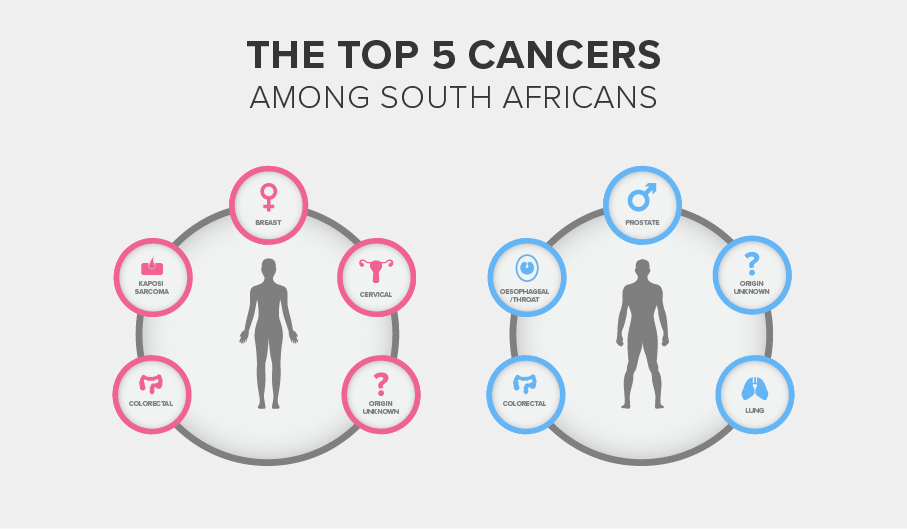Cancers: a complex world of illness in various parts of the body
Cancer is a complex, life-changing disease which affects millions of people. It is the term for a group of different diseases – haematological (blood) cancers and solid tumours – which includes malignant tumours of different sites.
There are more than two hundred different kinds of cancer. Cancer can develop in almost any organ or tissue, such as the lung, colon, breast, skin, bones or nerve tissue.
Most cancers are named after the organ or type of cell in which they originate and it is characterised by the uncontrolled growth of abnormal cells.

Main cancer categories
According to CANSA, cancers are classified into six major categories – based on tissue types:
- Carcinoma originates from the epithelial layer of cells that form the lining of external parts of the body or the internal linings of organs within the body.
- Sarcoma originates in connective and supportive tissues including muscles, bones, cartilage and fat. Bone cancer or osteosarcoma mostly affects young people.
- Myeloma originates in the plasma cells of bone marrow that produce various antibodies in response to infections. Myeloma is a type of blood cancer.
- Leukaemia is a group of cancers that are classified as blood cancers. These cancers affect the bone marrow where blood cells are produced. When cancerous, the bone marrow begins to produce excessive immature white blood cells that fail to perform their usual actions and the patient is often prone to infection.
- Lymphoma are cancers of the lymphatic system. Lymphomas may be of two types – Hodgkin’s lymphoma and Non-Hodgkin’s lymphomas. In Hodgkin’s lymphoma there is characteristic presence of specific cells in the tissue samples which are not present in Non-Hodgkin’s lymphoma.
- Mixed types have two or more components of the cancer.
References
